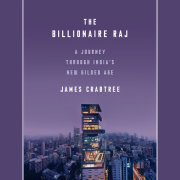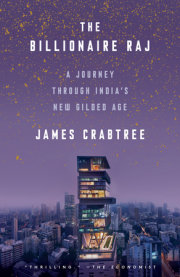It was a sunny December day when I found it, abandoned outside a Mumbai police station and draped in a dirty plastic sheet. The silhouette revealed the outline of a car, low to the ground and beaten out of shape. A chunky black tire was propped awkwardly against the chassis. Thin white string tethered the sheet to a telephone pole, although this did nothing to stop me lifting it up and taking a peek below.
The scene underneath was a mess. A tangle of metal erupted from the driver’s side. The bonnet was bent across the middle, pushed up by a violent impact. Broken tubes stuck out from the engine. Through a shattered windscreen I could see cramped rear seats, once plush red, now filthy and covered with dust. But the passenger’s side was in better shape, revealing the classic lines of an Aston Martin Rapide, one of the world’s most expensive supercars.
The vehicle had met its demise late at night a few weeks earlier, in an incident whose mysterious aftermath stuck long in my mind as an exemplar of the power of India’s new super-rich. It had been roaring north up Pedder Road, a dual carriageway that separates two wealthy sections of the country’s financial capital. To the left was Breach Candy, a plush enclave of residential towers offering pleasant views over the Arabian Sea. Narrow lanes to the right led up to Altamount Road, where colonial-era mansions hid behind high walls and iron gates.
It was roughly 1:30 a.m. when the Aston’s driver lost control, rear-ending another car. Jolted by the impact, the second vehicle, an Audi A4, spun onto the opposite lane and clipped an oncoming bus. A collision with a third car then crushed the Aston’s front end, sending it skidding across the road, where it crumpled to a halt in a whirl of smoke and glass. No one was killed, but as her Audi came to a stop, Foram Ruparel—a 25-year-old business school student, who had driven south earlier for dinner—realized she was in a fix. There were plenty of fancy cars in Mumbai, but Aston Martins remained rare. Anybody owning one had to be rich—really rich. And that meant trouble.
What happened next is fiercely disputed. Media reports said the Aston’s driver first tried to flee in his crippled vehicle. Realizing it was too smashed-up to drive, he jumped into one of two Honda sports utility vehicles that happened to have followed him down the road. “In seconds, there was a swarm of security men around the car and they bundled the driver into one of the SUVs and sped off,” Ruparel told a local paper a few days later. The security detail zoomed back down the road, heading towards the safety of a house just a few minutes’ drive away.
Although not visible from the crash scene, the building came quickly into view as they raced south. A giant residential skyscraper called Antilia, it loomed high above the street, an unavoidable symbol of the prominence of its owner: billionaire Mukesh Ambani, India’s richest man.
News of the hit-and-run filtered out quickly the next morning, Sunday, December 8, 2013. The ruined Aston turned out to be owned by Reliance Ports, a little-known subsidiary of Ambani’s main Reliance Industries business, a giant conglomerate with interests stretching from oil refining and gas exploration to telecoms and television. Later that afternoon, Bansilal Joshi, a portly 55-year-old driver employed by the Ambani family, presented himself at Gamdevi police station, about two kilometers from the crash site. He had taken the car out for a late-night test drive, he confessed, and had been behind the wheel when it crashed. Then he fled the scene.
Ruparel told a different story, at least at first. “I could see in the rearview mirror the car was moving at a high speed, weaving left and right. And then, in a flash, it hit my car,” she told one local newspaper. “I had a decent look at the driver’s face. He was a young man.” In the days after the crash, rumors spread that the young man may have been a member of the Ambani family, the country’s preeminent business dynasty. Yet over the next few weeks Ruparel had a change of heart. Towards the end of December, she signed a statement in a magistrates’ court claiming Joshi had been the driver after all.
The Reliance Industries account of what happened that night may very well be true. No one has been able to find out for sure. The police said CCTV footage of the moments leading up to the crash was inconclusive. Pedder Road is one of Mumbai’s busiest thoroughfares, teeming even late at night with roadside hawkers, pedestrians, and pavement-dwellers trying to catch a few hours of sleep on cardboard mats. Yet none of those at the scene caught a glimpse of the fleeing driver. India’s usually tenacious media covered the story with caution too. “While the cops have maintained a stoic silence so have most of India’s leading television channels,” a report in Forbes went so far as to put it later. In spite of the denials, the article even named a member of the Ambani family on the basis of rife “speculation online” that he “was allegedly involved in the smash-up.”
Curious to find out more, I called a company spokesman in the days following the crash. He told me it was perfectly normal for Reliance Ports, ostensibly a logistics and transport business, to own a sports car with a price tag in the region of $700,000. There was also nothing unusual, he said, in an employee taking such a car for a test drive in the small hours of the morning, or for him to be trailed by security vehicles. The company firmly denied that anyone other than Joshi, its driver, had been involved. In private, many of those I met over the following days were skeptical of elements of this story, although almost no one said anything in public. Omar Abdullah, the outspoken chief minister of the state of Kashmir, was one exception, tweeting: “If friends in Mumbai are to be believed, it seems the only people who don’t know who was driving the fancy Aston Martin are the Mumbai police.”
Not long afterwards, I went to an evening reception in the seafront Taj Palace hotel, whose Gothic stone facade and pale red dome provide one of Mumbai’s most recognizable landmarks. Darkness was falling outside as corporate luminaries gathered beneath glistening chandeliers in the main ballroom. The lights of distant yachts glinted in the harbor. Talk turned quickly to the mysteries of the crash, although only after much conspiratorial glancing over shoulders. Reliance continued fiercely to deny any wrongdoing, but rightly or wrongly many of those I met seemed doubtful about the company’s version of events.
Whatever the truth of the matter, the incident cast a revealing light on how billionaires were viewed in India. That evening, I found myself playing devil’s advocate. Both theories about what happened seemed questionable, I argued: the Reliance account of the late-night test drive on the one hand and the vague conspiracy and cover-up theory on the other. At one point at the Taj I told the head of a local bank that the Reliance story seemed the more likely of the two. He shot me a look with which I would soon become familiar: a combination of amazement and pity at the foreigner’s naïveté. I realized then the mystery of who exactly had been driving was not the real issue. Such was the mystique surrounding the Ambanis, and so comprehensive was the belief in their power, what mattered was that everyone thought they could, if needed, make such a scandal disappear.
A few days later I went to Gamdevi police station to find out more. It was a dusty, chaotic old building, set back a few blocks from Chowpatty Beach and the Art Deco apartment blocks of Marine Drive, the city’s crescent-shaped promenade. Bored-looking officers napped on plastic chairs beneath slowly turning fans, guarding rooms filled with overflowing piles of paper. The inspector was out, one told me. He returned eventually and granted a cautious interview.
“Where is the car now?” I asked.
“It has been impounded. For tests,” he said.
“And when will those tests be finished?”
“It will take some time.”
As we spoke, my mind conjured up a scene from the television series CSI, in which the Aston’s ruined body had been carried to a spotless warehouse somewhere on the edge of town, where experts in overalls and white gloves were conducting a careful forensic examination. It was only when I emerged blinking back into the sunlight that a silhouette wrapped in a gray sheet caught my eye, parked a short distance down the street. No, I remember thinking. It can’t be. Over the next year, I would stop by from time to time to see if the car was still there. It always was. The sheet got progressively dirtier, its top more deeply encrusted with bird shit. But the car beneath never seemed to have been touched. Sometimes I would stop by the police station and ask the officers how the investigation was progressing. “Ongoing,” they told me, a code word we both understood to mean nothing whatsoever was happening.
Copyright © 2018 by James Crabtree. All rights reserved. No part of this excerpt may be reproduced or reprinted without permission in writing from the publisher.








